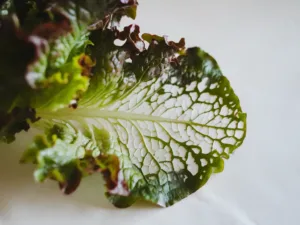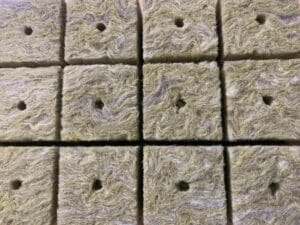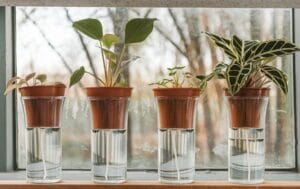Alocasia, also known as the Elephant Ear, is one of the most fascinating houseplants you can grow in a hydroponic system. With its striking leaves, often large, glossy, and deeply veined, Alocasia brings a touch of the exotic to any home. But it’s not only the impressive leaves that make it popular. Alocasia is also known for its versatility and adaptability, especially when it comes to growing conditions.
Hydroponics, or soil-free cultivation, allows Alocasia to thrive in a well-controlled environment. Without the typical problems of soil-based cultivation, such as waterlogging and pest infestations, Alocasia often grows faster and healthier in hydroponics. In this article, we’ll show you everything you need to know to grow your own Alocasia in hydroponics and turn it into a true eye-catcher in your home.
The Best Alocasia Varieties for Hydroponics
Not all Alocasia varieties are the same, and some are better suited to hydroponics than others. Here are five outstanding varieties that are particularly well suited for hydroponic growth:
- Alocasia Polly: This compact, low-maintenance variety is ideal for indoor cultivation. It has glossy, dark green leaves with bright veins that provide a beautiful contrast.
- Alocasia Zebrina: Known for its striped stems that resemble a zebra, this variety has large, arrow-shaped leaves. It is a fast-growing variety and brings a tropical flair to your space.
- Alocasia Silver Dragon: With its silver, textured leaves and compact growth form, this variety is perfect for smaller spaces. It is low-maintenance and thrives well in hydroponic systems.
- Alocasia Amazonica: This variety is particularly popular for its deep green, metallic leaves with striking veins. It loves humidity and thrives in a well-ventilated hydroponic environment.
- Alocasia Black Velvet: With its velvety dark green leaves, almost appearing black, this variety is a real eye-catcher. It grows relatively slowly and is well-suited for smaller systems.
Each of these varieties has its own characteristics and care requirements, but all can thrive in a hydroponic system with the right care.
Suitable Hydroponic Systems for Alocasia: Which Method Suits You?
Choosing the right hydroponic system is essential for successful Alocasia cultivation. Here are some of the best systems to consider:
| Hydroponic System | Advantages | Disadvantages |
|---|---|---|
| Deep Water Culture (DWC) | Easy to set up, provides good oxygenation for roots | Can be problematic during power outages |
| Ebb and Flow | Good control of water and nutrients | Requires regular maintenance and monitoring |
| Wick System | Simple and cost-effective | Limited nutrient delivery, not ideal for larger plants |
| Nutrient Film Technique (NFT) | Continuous nutrient flow, low water usage | Prone to pump failures and blockages |
For beginners, the Deep Water Culture (DWC) system is best, as it’s easy to set up and maintain. More advanced gardeners might prefer the Nutrient Film Technique (NFT) system, which allows for efficient nutrient usage and lower water consumption.
Growing Alocasia: Step-by-Step to a Robust Plant
Growing Alocasia in hydroponics is easy if you follow the right steps:
- Choosing Seeds or Cuttings: Alocasia can be grown from both seeds and cuttings. Cuttings are generally faster and easier.
- Start in Growing Cubes: Use rockwool or coconut fiber cubes as a growing medium. They retain moisture well and promote germination.
- Care until System Transfer: Keep the growing cubes moist and ensure a warm environment. When the roots are about 5 cm long, you can transfer the plant to the hydroponic system.
- Regular Monitoring and Adjustment: Check the pH and nutrient solution regularly to ensure optimal conditions for the plant.
The Ideal Substrate for Alocasia in Hydroponics
Alocasia needs a suitable substrate to stabilize the roots while providing good water and oxygen supply. Expanded Clay and Rockwool are two of the best options. Both substrates offer excellent drainage properties, preventing waterlogging—a critical feature for Alocasia, as its roots are sensitive to overwatering.
Temperature and Humidity: Optimal Conditions for Healthy Growth
Alocasia loves warmth and humidity. The ideal temperature range for Alocasia is between 18°C and 25°C. At the same time, the plant needs a high humidity level of around 60-80%. In drier environments, you can use a humidifier or spray the leaves regularly to increase humidity.
Lighting Requirements for Alocasia: Perfect Lighting for Stunning Leaves
Alocasia prefers bright, indirect light. Direct sunlight can scorch the leaves, while too little light can inhibit growth. A spot near a window with diffused light or using grow lights can be ideal, especially during winter months.
pH and EC Levels: The Science Behind the Perfect Nutrient Solution
The ideal pH level for Alocasia in hydroponics is between 5.5 and 6.5. A slightly acidic pH ensures optimal nutrient absorption for the plant. The EC level (electrical conductivity) should be around 1.0 to 1.6 mS/cm to maintain the correct nutrient concentration.
Nutrients and Fertilization: The Right Diet for Strong Alocasia Plants
Alocasia requires a balanced mix of macro- and micronutrients. Use a special hydroponic fertilizer that contains essential nutrients like nitrogen, phosphorus, potassium, as well as calcium, magnesium, and trace elements. Fertilize the plant regularly, but avoid over-fertilizing, as this can cause root damage.
Diseases and Pests: Common Issues and Solutions
Alocasia is susceptible to certain diseases and pests, such as spider mites, aphids, and root rot. Prevention is the best way to keep your plants healthy. Regularly inspect your plants for signs of pests and diseases, and act quickly by using organic insecticides or neem oil if necessary.
Plant-Specific Tips and Advice: Making Your Alocasia the Star
- Improve Air Circulation: A small fan nearby can help circulate air and prevent mold.
- Leaf Care: Regularly wipe the leaves with a damp cloth to remove dust and keep the plant healthy and shiny.
- Styling Tips: Use decorative pots and arrange your Alocasia with other plants to create a tropical atmosphere.
The Beauty of Alocasia in Your Hydroponic Garden
With its impressive leaves and tropical flair, Alocasia is a fantastic choice for anyone looking to enhance their interior space with a touch of greenery. With proper care and a well-thought-out hydroponic system, your Alocasia will not only thrive but also become a true focal point in your living space. Start your hydroponic plant journey with Alocasia and enjoy the many benefits of this beautiful houseplant!







